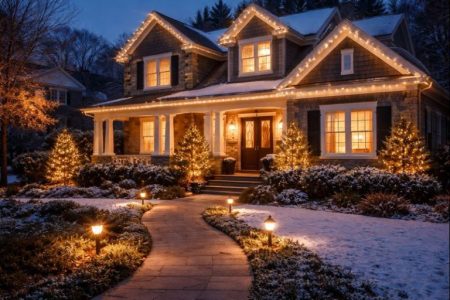While there is a common perception of the space that exists between the underfloor and the upstairs ceiling, it is likely that many homeowners are unaware of that space as they have never even opened the access panel to the attic. Attic insulation condition. A poorly insulated attic can lead to serious and expensive roof problems. To help you better understand, we’ve outlined some clear signs of a poorly insulated attic.
Here are four signs that your attic is poorly insulated. Uneven comfort levels are a sign of air leaks, while icicles are another sign of a poorly insulated attic. Ice formation can damage your shingles and siding. A worn-down roof can also result in leaks and water damage, as well as mold formation. So, if you notice any of these signs, you should invest in an attic insulation upgrade.
- Moisture buildup
Excess moisture in your home can be a result of poor attic ventilation. If your attic is not well ventilated, it can collect condensation, which can result in water damage and mold growth. Common sources of excess moisture in a home include basements, floor slabs, and unvented gas space heaters. Excess moisture in your attic may also be a result of improper ventilation, such as inadequate insulation.
The presence of visible mold and mildew in your attic is another sign that your attic is not well insulated. This problem can lead to structural issues, mold growth, and other problems. To solve the problem, you must first identify the source of moisture, then make the necessary repairs before the problem worsens. The first place to look for signs of a leaky roof is the attic.
If you’re concerned that your attic has inadequate insulation, consider hiring an insulation contractor to perform a thorough inspection. A professional can assess moisture problems and make recommendations that are most effective for your home. While your attic insulation is important, it will only be of benefit if you can control the infiltration of water. Ultimately, moisture control and ventilation is the only way to solve the problem.
- Condensation
If you have seen moisture in your attic, you may want to have it inspected. Look for nail points that are rusty. In addition, your attic may have ice dams, which are signs that heat is escaping. These problems are often caused by inadequate insulation. To remedy the problem, try adding some iFoam to the attic. A professional will be able to determine the problem and recommend the proper course of action.
Attic condensation is a serious problem, and it can lead to a variety of problems, including roof sagging, rotting beams, and respiratory problems. More serious problems can include mold and water damage, requiring extensive repairs and the hiring of a professional mold remediation team. Proper insulation will help prevent these problems, and you’ll avoid a lot of costly repairs down the road.
Also Read: What you need to know about attic ventilation
Attic condensation is caused by the accumulation of moisture, usually in the form of frost or frozen water droplets. The freezing and thawing cycles in the attic cause moisture to accumulate in it. This moisture causes the attic to expand and contract, causing structural damage and deterioration of the interior of your home. Condensation in the attic can also be caused by leaks in the attic and a lack of proper ventilation.
- Ice dams
The first step to remedy an ice dam on the roof is to increase the insulation in the attic. A properly insulated attic will not only reduce the energy bill, but it will also protect your home from future damage caused by freezing and thawing. You should aim to insulate the attic to an R-40 value. You should also consider air sealing and recessed lighting, which can also be problematic.
Another way to check for ice dams is to examine your attic for water stains. Whether or not water is dripping from the ceiling or the walls, these are signs of an ice dam. If water is dripping from the ceiling, this should be addressed immediately. This moisture could also lead to the growth of mold. Similarly, if water is dripping from the ceiling, you should seek immediate repair.
The first ice dam may be difficult to remove with manual methods. You can also use heat cable to mitigate the problem. However, heat cable is not a permanent solution to ice dams. A permanent solution is to install proper attic insulation. Proper ventilation is important to prevent conduction and convection, two major causes of ice dams. The latter is the easiest to fix, as it only requires a few hours of manual labor.
- Rodents
If you’ve ever noticed droppings in your attic, then you know there are rats and mice living there. These rodents leave behind pellet-shaped droppings. These droppings can be watermarks or dried stains. You may also notice evidence of nesting. Rats and mice will create nests in your attic using shredded paper, insulation, and twigs. These pests also tear up ducts and insulation.
One of the easiest ways to get rodents in your attic is through a tree branch. They will climb these branches and use them as bridges to reach the roof, where they will settle and nest. The branches provide easy access to the ground and a place for them to hide. Once inside, they will seek warmth, food, and a place to breed. The signs of inadequate attic insulation include rodents in your attic.
In addition to droppings, rodents can also cause damage to your insulation. Look for signs of damage from their scurrying behavior. Small holes in the walls and floors may be evidence of an infestation. If you see pillars of urine, you have a large infestation. Rats also tear insulation and create nests using scraps. You may also notice shredded cloth fibers in your attic.
- Heat loss
Often overlooked, the attic can be a source of heat loss and even a refuge for unwanted animals. Poor insulation will allow cold air to enter your home and allow unwanted animals to live in the attic. If you are experiencing cold spots in your home during the winter months, check for gaps around doors and window frames. These can be repaired with caulk and weatherstripping. If you see signs of these problems, it may be time to have your attic insulated.
One of the best ways to tell whether your attic is properly insulated is by observing the distribution of heat inside your home. Cold areas may be due to drafty doors and windows, or to a duct that passes through an uninsulated area. When the warm air in your home travels through a cool spot, it loses heat. Another symptom of inadequate insulation is water leaking into your attic. This water can cause damage to your shingles and may even cause mold growth.
The icicles that form near your front door are also indicative of poor attic insulation. The ice could cause the pipes to freeze and cause unnecessary damage to the roof and home. Water puddles in the attic are another indicator of water leakage. When water leaks, poor insulation will contribute to the leaks. Water can also leak from an attic, allowing heat to escape from the house.
- Insects
Having an infestation of bugs or mice in your attic is a clear sign that your attic is not properly insulated. While you can do some DIY removal to remove the nesting materials and clean up the debris, small pests and birds will need the services of experienced exterminators to get rid of them completely. A poorly insulated attic can lead to costly removals later on.
The lack of insulation in the attic can result in cold drafts inside the house. A poorly insulated attic allows cold air to enter during winter, causing your home’s energy bill to increase. A well-insulated attic will block cold air and keep your home comfortably warm even after you’ve run your HVAC. Even if insects don’t live in your attic, the presence of a poor-insulated attic is a sign that you should take steps to improve its insulation.
Inconsistent insulation is one of the most common causes of high energy bills. Inadequate insulation allows pests to enter your home through tiny cracks, holes, and openings in doors and windows. In addition to being a cause of high energy bills, improper insulation can also cause pest infestations and a wide range of health problems. The presence of insects and small animals in your attic can cause the heating and cooling systems to work overtime and cost you money. Regular inspections can identify these problems early and prevent the infestation from spreading throughout your home.
- Ineffective insulation
If you’re having trouble keeping your home comfortable, ineffective insulation in your attic may be the culprit. You’ve probably noticed a drafty hallway or a higher energy bill. If so, it’s time to consider a professional attic insulation upgrade. Here are some tips for upgrading your insulation:
Installing more insulation doesn’t necessarily mean adding more of the same kind. You can add additional fiberglass batts or blankets. The fiberglass batts you purchase must be “unfaced” or without a backing, otherwise they won’t be effective. You will also need a blowing machine to install loose fill, and some home improvement stores rent blowing machines. In the end, if you have more than one type of attic insulation, you can add more layers of insulation to your home’s attic.
You must also consider the condition of your roof. If there’s moisture in your attic, it’s not uncommon for the roof to leak or a blocked vent. When insulation is wet, it will become ineffective and air pockets will become too small to salvage. Furthermore, moisture in your attic will create a perfect breeding ground for mold. This type of mold is harmful for your health because it releases mycotoxins into the air, which are known to cause respiratory problems and increased risk of asthma.






